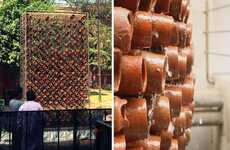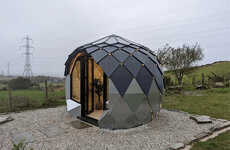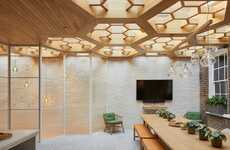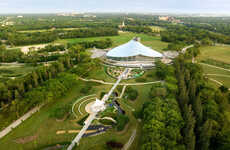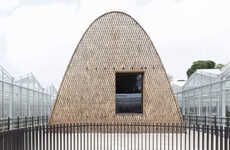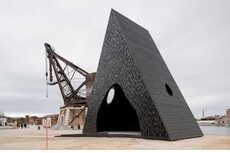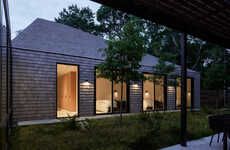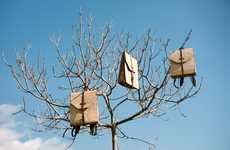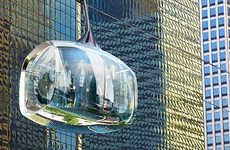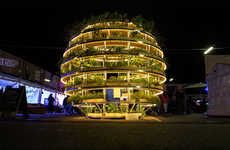
The Science Pyramid Was Inspired by Honeycombs
Mishal Omar — June 1, 2016 — Eco
References: burkettdesign & archdaily
Designed by architecture studio Burkettdesign, The Science Pyramid was built as an addition to the Denver Botanic Gardens and features a unique and sustainable design.
The structure was inspired by the strength and "geometric efficiency" of honeycombs and so its roof is in the same hexagonal shapes as honeycombs are. The pyramid-shaped building also features glass that automatically increases or decreases its opaqueness based on the solar energy coming from the sun outside. The building is also energy efficient as it utilizes solar energy via solar panels.
The Science Pyramid is the perfect addition to the Denver Botanic Gardens since it is not only inspired by nature in its design, it also makes sure to protect nature through its educational displays and sustainable components.
The structure was inspired by the strength and "geometric efficiency" of honeycombs and so its roof is in the same hexagonal shapes as honeycombs are. The pyramid-shaped building also features glass that automatically increases or decreases its opaqueness based on the solar energy coming from the sun outside. The building is also energy efficient as it utilizes solar energy via solar panels.
The Science Pyramid is the perfect addition to the Denver Botanic Gardens since it is not only inspired by nature in its design, it also makes sure to protect nature through its educational displays and sustainable components.
Trend Themes
1. Sustainable Architecture - There is a growing trend in sustainable architecture inspired by nature that offers opportunities to design buildings that are not only functional but also environmentally friendly.
2. Honeycomb-inspired Design - Designers are increasingly being inspired by the strength and geometric efficiency of honeycombs as a way to create beautiful, harmonious and ecologically responsible structures.
3. Smart Glass Solutions - Smart glass technology is increasingly being used in architecture to allow for sustainable energy solutions and increased energy efficiency.
Industry Implications
1. Architecture - The architecture industry can benefit from studying the unique structures of nature and looking for ways to integrate natural elements into their designs.
2. Sustainability - The sustainability industry can leverage honeycomb-inspired designs to create products and solutions that are both functional and environmentally friendly.
3. Energy - The energy industry can explore the use of smart glass technology to innovate new, energy-efficient solutions that reduce reliance on fossil fuels.
4.1
Score
Popularity
Activity
Freshness


